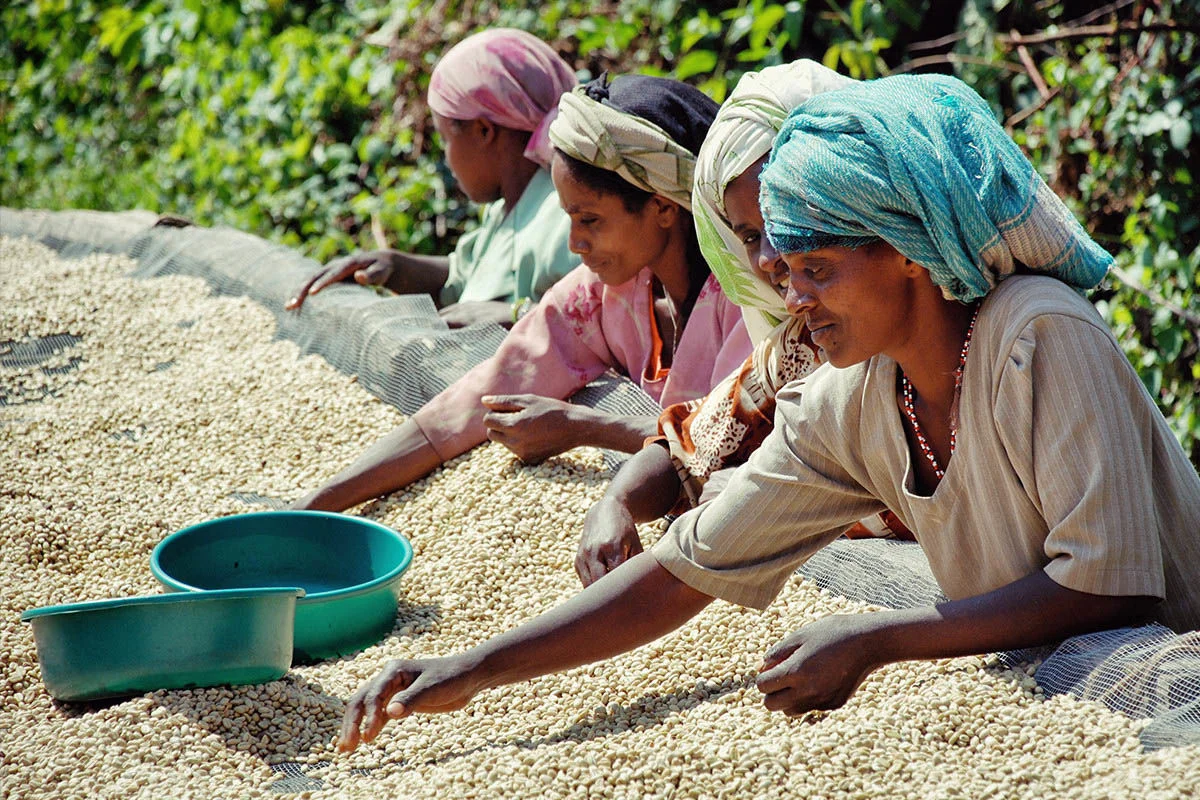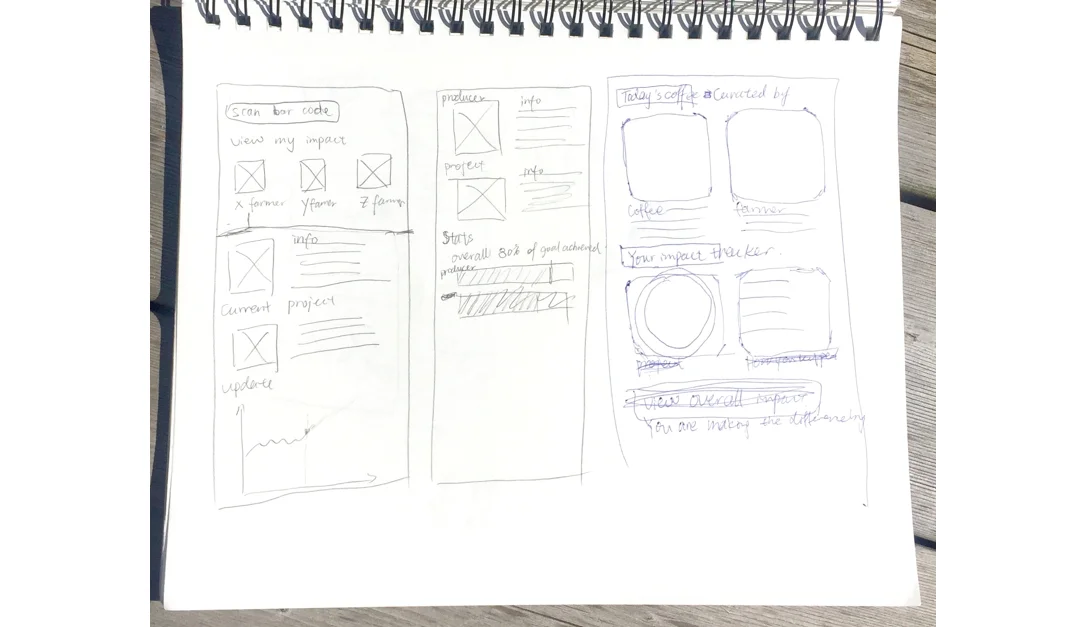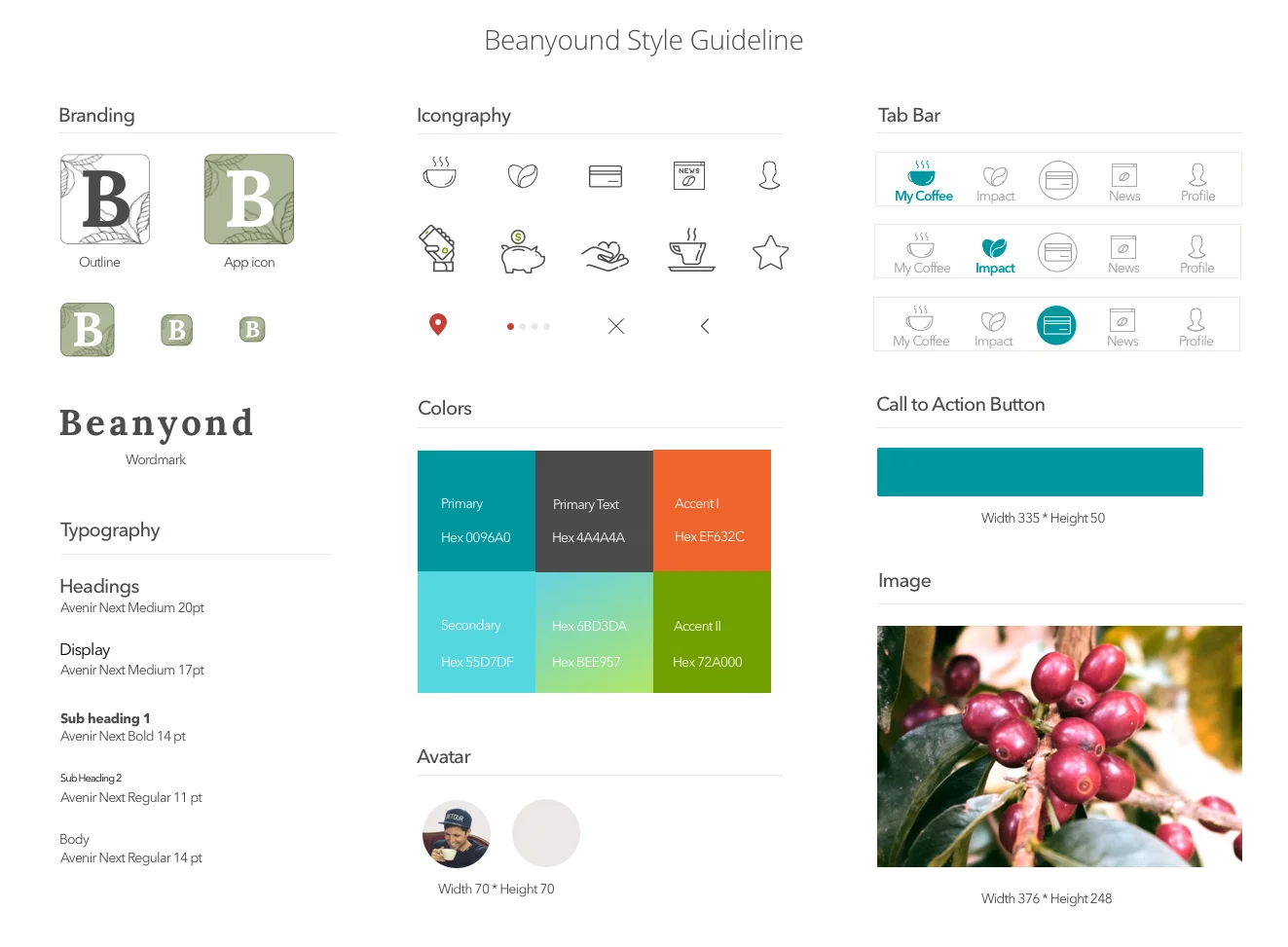
At a glance
Beanyond was a 10 week case study focused on developing a way to connect coffee lovers to the stories of producing coffee from bean to cup. This case study will take you through my process; from research to interactive prototype, to developing meaningful interactions through digital touch points.
Why I started this project?
For the love of coffee! When I used to work as a barista at an independent coffee shop, customers would often ask about the origin of the coffee they were drinking. These frequently asked questions made me realize that in the current trendy coffee scene, knowledge and available information about coffee beyond brewing instructions, was limited and not always easily accessible.
How might we design a digital product that connects specialty coffee lovers with the process and people behind farming, harvesting, and roasting coffee?
Process
Design research
Prototype
Usability testing
Visual design
My role
I delivered all the research and design.
Secondary research
Market analysis
Market Size: Based on the Coffee Association of Canada (CAC)'s website, it showed that during the year of 2016, 62% of Canadian coffee drinkers consumed third wave coffee
Age Group: Millennials (age 18 - 34) are more interested in coffee that is ethically sourced
Beyond websites that a consumer would have to actively seek out, there are no digital products on the market that can instantly bring information about the coffee you are drinking to your fingertips.
Methods
Market research
Primary research
Goals
Describe what and why coffee lovers want to learn more about their coffee.
Identify the type of person who wants to know more about their coffee
Pinpoint the most meaningful digital solution for coffee to connect with coffee farmer’s lives
Key findings
Third wave coffee lovers - those who appreciate coffee as a craft and want to know about their coffee from its origin to the final brewing process - are people who pay attention to the life cycle of things. There are people who enjoy a quality cup of coffee, but they don’t necessarily want to know the details.
“I want to feel good when I have my coffee, knowing if the coffee is being direct trade, which countries come from and who am I supporting. ”
“Producers name and their locations are printed on a bag, but I would like to know more about them. I want to make more informed decisions and ethical decisions. Coffee seems like a good place to start. ”
Methods
Semi-structured in-person interviews
Field Visits
Online surveys
Participants
10 specialty coffee lovers in Toronto between ages of 18 - 34
53 online surveys
Recruitment
In-person Interviews: Approached regular coffee drinkers at coffee shops in central Toronto
Online Surveys: posted surveys on Facebook pages of indie coffee shops in central Toronto
Persona
Based on my findings, I draw insights from the average of my target users and developed a personality type.
Meet Summer; a 27-year-old data analyst who lives in Toronto. She is a coffee lover and an advocate for sustainability.
↓
Journey Mapping
After talking to the target users and visiting coffee shops in Toronto, I mapped out Summer’s coffee shop experience.
↓
Enhancing summer's experience
3 Motivations
To gain more knowledge and be educated on the coffee they are drinking
To have a sense of social responsibility, knowing that their choice of purchasing a cup of coffee is an ethical decision
To improve transparency in the coffee industry and bring ethical and sustainable coffee to the Canadian market
3 main functions
Purchase coffee and get immediate and up-to-date information about its origin
Get news and updates from your favourite roasters and producers
Track the impact of each coffee purchase on the coffee producers
Early stage ideations
Iterations
After Ideation, I want to make sure coffee lovers can use the app easily. Also understand where were they tapping, what happens after their tap meet their expectations.
Learnings
Users enjoyed learning and refreshing their coffee knowledge, but they found that some of the information was too dry and needed to be more engaging.
Methods
Usability testing
In-person at coffee shops
Participants
5 for each iterations, in total I tested with 20 participants.
Creating the style guide
My takeaways
Understand the process of design is the problem solving
Ask users their motivations includes 5 Whys
Design critic and 1000 feet thinking are essential for designing minimal and variable product








